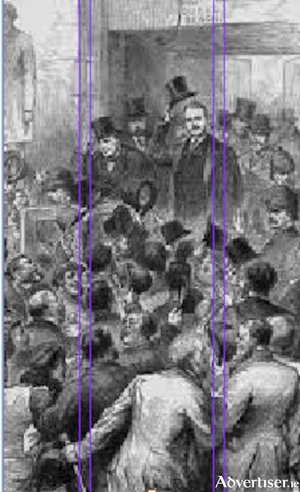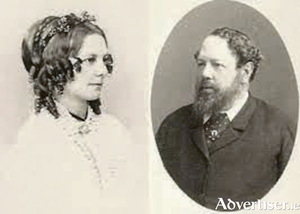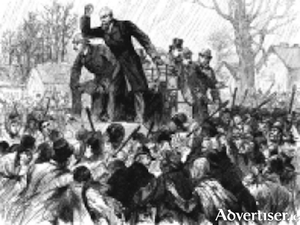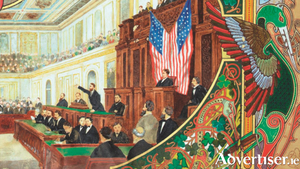Search Results for 'Mitchell Henry'
6 results found.
Kylemore Abbey to celebrate Heritage Week with unveiling of new historical display

Kylemore Abbey has an exciting line-up for Heritage Week next week, including the unveiling of a new display of the ceremonial parliamentary robes and coronet of the Duke of Manchester, a former owner of the abbey.
A different type of politics was needed

When Mitchell Henry entered Westminster parliament in 1871 he went with hope in his heart and a mission to tell the British people the precarious circumstances of the Irish tenant farmer. In many ways he resembled Jefferson Smith in the Frank Cappa film ‘Mr Smith Goes to Washington’ where a naive, idealistic young man has plans to change America.* Mitchell Henry, a liberal, kindly man, had plans to be a voice for the Irish tenant farmer within, what he believed, was a paternalistic landlord system, but he walked into a political cauldron, waiting to explode.
Fantasy castles in 19th century Connemara

It must have been an extraordinary sight in the 1860s to see Kylemore castle rise from a bog in the heart of Connemara’s Twelve Pins, barely a decade following the devastation of the Great Famine. More than 100 men were employed, some coming from as far away as Renvyle and further, at a handsome wage of seven to 10 shillings a week, turning rough, soggy land, only good for shooting wild fowl and for fishing in its nearby lakes, into a magnificent building. Today it stands more like a palace than a castle, and is still a show-stopper on the Letterfrack road.
‘It is not our mistress we have lost, but our mother.’

When Mitchell Henry entered Westminster parliament in 1871 he went with hope in his heart and a mission to tell the British people the circumstances of the Irish tenant farmer. He reminds me of the Frank Cappa film Mr Smith Goes to Washington where a naive, idealistic young man has plans to change America.* Mitchell Henry, a liberal, kindly man, had however, walked into a political cauldron, waiting to explode.
A fantasy of romantic days of yore

It must have been an extraordinary sight in the 1860s to see Kylemore castle rise from a bog in the heart of Connemara’s Twelve Pins, barely a decade following the devastation of the Great Famine. More than 100 men were employed, at a handsome wage of seven to 10 shillings a week, turning rough, soggy land, only good for shooting wild fowl and for fishing in its nearby lakes, into a magnificent building. Today it stands more like a palace than a castle, and is still a show-stopper on the Letterfrack road.


